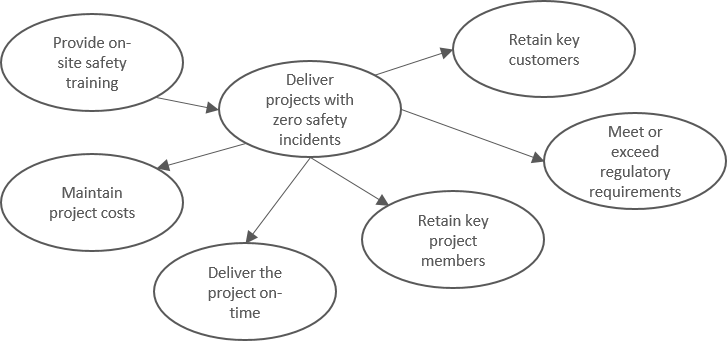Project Measurement: Critical Success Factors
Article 5 of 20
Last week’s project measurement article uncovered how to use frameworks to provide clear direction on how a measurement initiative will deliver results. Also introduced was Darby Consulting’s Performance Improvement Framework (PIF) for implementing performance measurement initiatives (see illustration below).
This week’s article explores the first step of PIF: identifying critical success factors.
Since there are an unlimited number of metrics – both quantitative and qualitative – to measure the performance of a project, you’ll want to narrow the field down to just the key performance indicators (KPIs) that are relevant to your project.
First, start by identifying the Critical Success Factors (CSFs) that are key to consistently delivering successful projects for your organization. CSFs are what leaders care most about when they think about improving performance. They answer the question: “what is a successful project?” CSFs that tie daily activities of teams and individuals to project and organization goals are essential for project staff to understand not only how their actions impact performance, but how they can improve it.
CSFs are identified by conducting a workshop with leaders and project managers to gain alignment on the CSFs that the organization will use to monitor and control project performance. This workshop will likely uncover 20 to 50 success factors. It is important that these success factors are relatively specific and not too vague. For example, “efficient use of company resources” is vague and the exact meaning will not be universally understood by all employees; however, “deliver projects on-time, within +/- 10% variance” and “deliver projects with zero safety incidents” are examples of specific success factors that leave little room for interpretation.
Once all success factors have been identified, the next step is to narrow down to those five to eight critical success factors (CSFs) that will consistently drive the success of projects. The following selection criteria may be helpful when selecting CSFs for your project organization:
- Specific and easy to understand
- Focused on a specific area of improvement
- Avoids generic or far-reaching visionary statements
- Have a significant influence on other success factors
A helpful tool for discovering the impact CSFs have on other success factors is through a visual mapping exercise that documents the cause-and-effect relationship between success factors. Darby Consulting typically uses a large white board or PowerPoint to display all identified success factors. Then, with the help of workshop participants, arrows are drawn to show which success factors affect other success factors. Remember to pay special attention to which direction the arrows are drawn to correctly show the cause-and-effect relationship. The success factors with the most outbound arrows are the ones with the greatest influence and likely to be the best CSFs.
Below is an illustration of success factor relationship mapping. It is clear from the visual map that “deliver projects with zero safety incidents” will likely be identified as a CSF given the number of other success factors it impacts.
Before finalizing the CSFs with leadership, you will want to test them against the KPI objectives. This will be covered in next week’s article and is Step 2 of the Performance Improvement Framework.
How Can Darby Help?
So what are your metric challenges? Does your project team or organization have identified metrics and associated actions? Is your team spending too much time gathering data for metrics that no one reviews? Darby Consulting has partnered with many Fortune 500 companies to plan and execute measurement initiatives that support a ‘continuous improving’ culture by not only focusing on reporting key results, but also identifying and measuring key performance indicators that lead to improved portfolio and project performance.
About Darby Consulting
Darby Consulting is a leading North American project and change management consulting firm providing project and program management consulting, project support, and change readiness services. We serve organizations across multiple industries and provide experienced, certified project and change management professionals who can quickly and efficiently deploy processes, tools, templates and technologies to meet any project challenge.



1 Comment
Project Measurement: Selecting KPI Objectives - Darby
April 8, 2015[…] week’s project measurement article examined the importance of identifying critical success factors (CSFs), which is the first step of […]